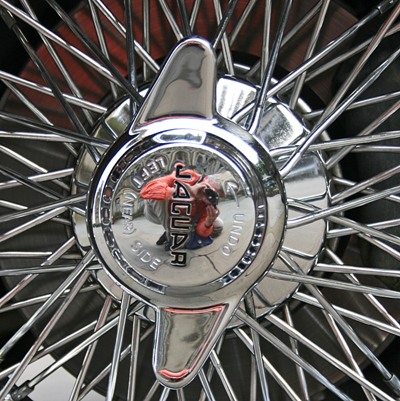Before reunification, Germany was divided into West Germany and East Germany, the joins coming together in Berlin where the city was partly in the West and partly in the East. There were many differences, such as the Tram system being mainly in the East. Traffic was also different, East Berlin designed a 'friendly' little signal to protect its pedestrians from Ladas, Moskvitch, Skodas, Trabants, and Wartburgs, and these have been retained in parts of Berlin today, due to popular demand. West Germany had a generic Green Man to guide people across in front of its BMW, DKW, Fords, Glas, Merecedes-Benz, NSU, Opels, and VWs. The picture below shows East and West versions.
 Ampelmännchen (on the left) was created in 1961 by an East German Traffic psychologist hopeful of getting obedience by appealing with a friendly little hatted mascot. On Re-unification Germany tried to impose its generic Green Man (right) on its eastern roads, but the citizens would not let go of their Ampelmännchen.
Ampelmännchen (on the left) was created in 1961 by an East German Traffic psychologist hopeful of getting obedience by appealing with a friendly little hatted mascot. On Re-unification Germany tried to impose its generic Green Man (right) on its eastern roads, but the citizens would not let go of their Ampelmännchen.In 1961 Berliner Mauer went up to prevent the leakage of people from the Communist East to the Capitalist West. The picture shows a small section left standing after The Wall was broken down in 1989. Don't be deceived by this neat, smooth faced wall with its softly rounded top. This was only the wall that faced the West, on the inside there were lines of barbed wire, moats, ditches, mines, automatic guns, lights, sensors. And if you got through all that, the Stasi took vengeance on those you left behind. In other parts of Berlin, the route of the Berlin Wall is traced on the ground with lines of cobbles.
 The Berlin Wall was erected in 1961 and pulled down in 1989 and formed the the most notorious part of the 'Iron Curtain'. Some 128 people are recorded as dying trying to escape from East to West Berlin. Apparently 5000 people escaped from East Germany to West Germany, some 2000 of those being Border Guards. (The wire netting is a modern attempt to stop the wall being chopped up for souvenirs or being plastered with graffiti - some hope!)
The Berlin Wall was erected in 1961 and pulled down in 1989 and formed the the most notorious part of the 'Iron Curtain'. Some 128 people are recorded as dying trying to escape from East to West Berlin. Apparently 5000 people escaped from East Germany to West Germany, some 2000 of those being Border Guards. (The wire netting is a modern attempt to stop the wall being chopped up for souvenirs or being plastered with graffiti - some hope!)Here is the Brandenburger Tor, a triumphal gate erected by Freidrich as an entrance to Berlin on the road from Brandenburg. It has always been symbolic for Berliners, and therefore for others who seek to make a big entrance to Berlin. When the Berlin Wall went up, the Brandenburg Gate became a rallying point for opposition to Soviet Rule and for Peace events. Since 1990 it has become a rather tame tourist attraction and now has ghastly modern architecture Embassies, businesses and posh hotels alongside it.
 Brandenburg Gate was commissioned by Friedrich Wilhelm II in 1788 to a classical design based on the gateway to the Acropolis in Athens. Topped by a fraulein (Viktoria) in a Quadriga (Chariot) because Mercedes-Benz were not yet made. She represents Victory, but has indeed been a victim of defeat, being stolen in 1806 by Napoleon when he defeated the Prussians, and then hauled back to Berlin in 1814 when the nasty little Corsican upstart got his come uppance. Viktoria got a bit bent and her chariot's wheels went flat during the struggles in 1945, but eventually she got dusted off and renovated to symbolise victory over communism when The Wall came down in 1989.
Brandenburg Gate was commissioned by Friedrich Wilhelm II in 1788 to a classical design based on the gateway to the Acropolis in Athens. Topped by a fraulein (Viktoria) in a Quadriga (Chariot) because Mercedes-Benz were not yet made. She represents Victory, but has indeed been a victim of defeat, being stolen in 1806 by Napoleon when he defeated the Prussians, and then hauled back to Berlin in 1814 when the nasty little Corsican upstart got his come uppance. Viktoria got a bit bent and her chariot's wheels went flat during the struggles in 1945, but eventually she got dusted off and renovated to symbolise victory over communism when The Wall came down in 1989.Modern Architecture knows no bounds, witness to this is the collision between a glass pudding bowl and the German Parliament building; the Reichstag. Opened in 1894, "Reichstag" was the parliament of Germany until 1933 and this was the Reichstag building. After the little Austrian Dictator came to power, the Reichstag building burned down amidst rumours of Communist plots but also of Brown Shirts vandalism; who knows. The result was that the building became a ruin and stood as a metaphor for the ruins of the German government. When democracy returned after WWII it returned to Bonn and the parliament then was called "Bundestag". The fall of the Berlin Wall determined the Bundestag to return to the Reichstag building and to get Sir Norman Foster to destroy it or renovate it. You decide.
 Berlin's Reichstag houses the German Parliament ('Bundestag'). It was re-opened in 1999 having been almost derelict since the fire of 1933, although some bad reconstruction was made in the 1960s. Sir Norman Foster won the 1990s competition and added the immense glass Cupola onto a building he gutted to a bare shell. I am not a fan of modern architecture, and wonder about the purpose of this glass pudding bowl; it looks like a superfluous gesture of attention-seeking rather than anything with any true function
Berlin's Reichstag houses the German Parliament ('Bundestag'). It was re-opened in 1999 having been almost derelict since the fire of 1933, although some bad reconstruction was made in the 1960s. Sir Norman Foster won the 1990s competition and added the immense glass Cupola onto a building he gutted to a bare shell. I am not a fan of modern architecture, and wonder about the purpose of this glass pudding bowl; it looks like a superfluous gesture of attention-seeking rather than anything with any true functionSachsenhausen was opened on the outskirts of Berlin in 1936 for mainly political prisoners. It housed approximately 200,000 prisoners who were sent there principally for 'crimes' such as political, or anti-social. This prison housed Gypsies, Criminals, people with disabilities, foreign prisoners of war, Jehovahs Witnesses and other religious groups, including 2 entire huts of Priests. It was for men only, although there were also some youths who were used for medical experimentation. The picture shows a memorial to Homosexuals who were sent here and identified by Pink Triangles, I use the word 'Camp' in my title to give extra emphasis to the forgotten thousands who died in these camps. See
Salaspils Seen for my Blog about a Latvian Nazi Work Camp. The history of the Holocaust is often very partial.
 Memorial to Homosexual men who were victims of the Sachsenhausen Concentration Camp. Homosexual men were regarded as criminals or ant-socials by the Nazi regime, and this was enough to get them sent to Work Camps such as Sachsenhausen. Forced to wear Pink Triangles on their striped uniforms, at least 50,000 Pink Triangles died of the harsh work.
Memorial to Homosexual men who were victims of the Sachsenhausen Concentration Camp. Homosexual men were regarded as criminals or ant-socials by the Nazi regime, and this was enough to get them sent to Work Camps such as Sachsenhausen. Forced to wear Pink Triangles on their striped uniforms, at least 50,000 Pink Triangles died of the harsh work. (see
Wikipedia for notes on the badges worn in these camps).









 Miss (British) Italia [left] and Bridge of Si(mon) [right]
Miss (British) Italia [left] and Bridge of Si(mon) [right]

























